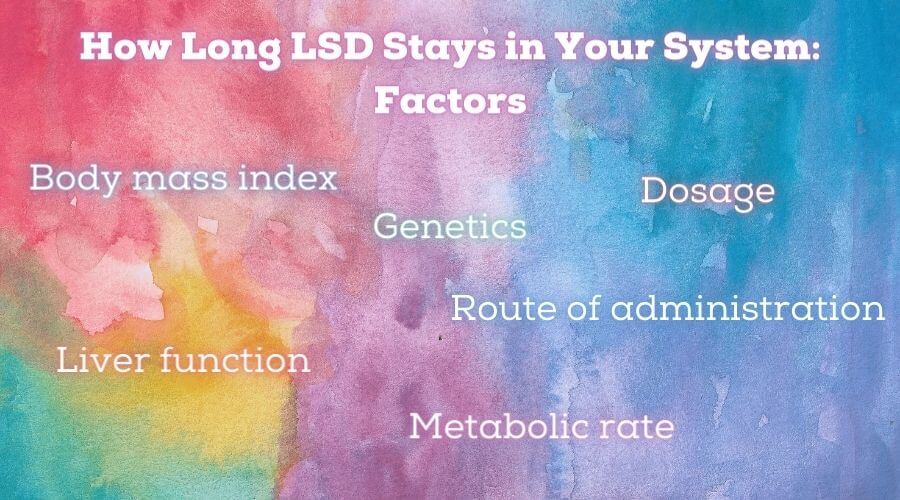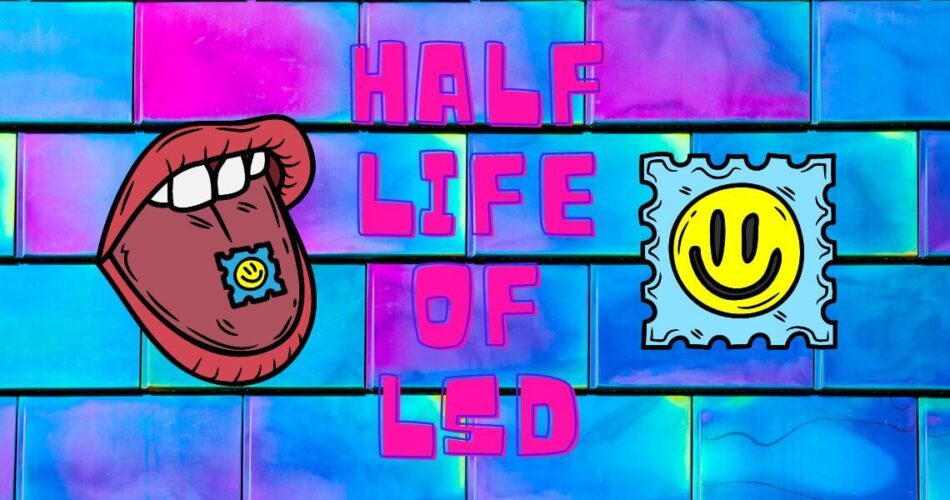LSD, also known as lysergic acid diethylamide, is a powerful hallucinogenic drug. It is most commonly found in tablet or liquid form and has been used recreationally since the 1960s. One of the main concerns with taking LSD is how long it stays in your system. But what’s the half life of LSD? Read on to learn more.
KEY TAKEAWAYS
- LSD, also known as lysergic acid diethylamide, is a powerful hallucinogenic drug that is most commonly found in tablet or liquid form.
- The half life of LSD in the body is not well-understood, as it varies greatly from person to person.
- Blood tests can detect the drug, and it may also be present in urine.
- Generally, however, half life for LSD can range from 3 to 5 hours. This means that half of the dose taken will be eliminated from the system within 3 to 5 hours after ingestion.
- However, this is just an average and the half life of LSD can range from 2 to 13 hours sometimes even more.
- There are several factors that affect how long the hallucinogen is present in the blood or urine including: body mass index (BMI), genetics, liver function, route of administration, metabolic rate, dosage, and drug tests.
How Long Does LSD Stay in Urine and Bloodstream?
The half life of LSD in the body is not well-understood, as it varies greatly from person to person. Blood tests can detect the drug, and it may also be present in urine. But the half life of LSD varies from person to person, and testing for LSD and drug screens may have different results.
Generally, however, half life for LSD can range from 3 to 5 hours. This means that half of the dose taken will be eliminated from the system within 3 to 5 hours after ingestion. However, this is just an average and the half life of LSD can range from 2 to 13 hours, sometimes even more.
Factors That Affect How Long LSD Stays in Your System
It is important to note, however, that half-lives are only an estimate and can vary greatly from person to person. Additionally, half-lives do not reflect peak concentration levels or the duration of LSD effects, both of which can also vary. As such, it is important to be aware of how one’s body reacts to the substance.
There are several factors that affect how long the hallucinogen is present in the blood or urine. Factors that affect the half life of LSD include:
- Body mass index (BMI): People with a higher BMI are thought to have longer half-lives for LSD, while those with a lower BMI may experience shorter half-lives.
- Genetics: Genetic polymorphisms can influence how quickly the body breaks down and eliminates various substances, including LSD.
- Liver function: The half-life of LSD is thought to be longer in individuals with liver impairment or disease, as their bodies may not be able to process and eliminate the substance as quickly.
- Route of administration: The half-life of LSD can also vary depending on how it is taken. For example, if it is taken intranasally (through the nose) or intravenously (into a vein), its half-life may be shorter than if it is taken orally.
- Metabolic rate: Individuals with faster metabolic rates may break down and eliminate LSD more quickly than those with slower metabolic rates.
- Dosage: The half life of LSD is also affected by the amount taken. Generally, larger doses will have longer half-lives than lower doses.

Drug Tests: Can Saliva or Hair Lab Tests Detect LSD?
Urine tests are the most common method used to detect drugs, and they can reliably detect LSD up to two days after ingestion. Saliva tests or hair testing are not typically used for drug testing because LSD is metabolized quickly in the body and may not be present in enough quantities in saliva to be detected.
LSD metabolites can be found in somebody’s hair by using gas chromatography/mass spectrometry and high-performance liquid chromatography. However, it may be more difficult to detect in hair samples, and it’s not commonly used.

Editor’s Note
This article is for informational purposes only and should not be taken as medical advice. If you have any questions or concerns about taking LSD, it’s best to consult a healthcare professional.
Half Life of LSD and LSD Use – Conclusion
Half life of LSD varies, and it’s difficult to give one good answer. The substance is quickly absorbed into the bloodstream through the gastrointestinal tract and mucous membranes after it is ingested. If you want to get rid of LSD quickly, stay hydrated. Drinking fluids helps your body flush out the drug and its metabolites through urine.
It’s important to note that substance abuse can have a range of serious consequences and should not be taken lightly. If you or someone you know is struggling with addiction, it’s important to seek help immediately. There are various resources available that can provide support and guidance for those who need it.
Frequently Asked Questions
Does the Military Test for LSD?
Yes, the military does test for LSD and other substances. The Department of Defense has a comprehensive drug testing program in place to ensure its personnel are healthy, safe, and productive. If an active-duty member tests positive for LSD or any other illegal substance they will face serious penalties.
What Shows up on a 12 Panel Drug Test?
A 12 panel drug test looks for the presence of twelve different drugs and/or their metabolites in a person’s system. The substances it tests for include amphetamines, cocaine, marijuana, opiates, phencyclidine (PCP), benzodiazepines, barbiturates, methadone, propoxyphene, methaqualone, ecstasy, and oxycodone. The test is often used as a pre-employment screening tool for employers in order to ensure the safety of their workplace.
What Happens to the Brain When LSD Is Consumed?
When LSD is consumed, it binds to serotonin receptors in the brain. This causes a variety of effects, including increased visual and auditory sensations, altered perception of time, changes in mood and perception of reality. Because LSD alters levels of serotonin in the brain, long-term use can lead to mental health problems such as depression or anxiety.
How Far Back Does a Lab Urine Test Go?
A lab urine test can detect drug use and abuse up to a few weeks after the drugs were ingested, depending on the type of drug consumed. Some drugs can be detected for up to 90 days, while others may only show up for a few days.
Similar Posts:
- How Long Does LSD Stay in Your System: A Full Guide
- Do Shrooms Show Up On a Drug Test? How Long Do Shrooms Stay in Your System? Find Out More About Psilocybin Mushrooms
- How to Get LSD Out of Your System? Tips for Sobering Up
- LSD on a Drug Test: How Long Does LSD Stay Detectable?
- How Long Do Shrooms Stay in Your System? Psilocybin in Drug Tests, Magic Mushrooms Effects & More
- Does LSD Stay in the Spinal Fluid? Is Acid in the Spinal Cord Forever?
- How Long Do Shroom Capsules Take to Kick In? Dosage, Trip, Effects





